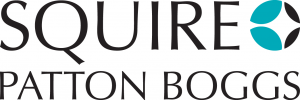Deloitte Real a Develop index
2.02.2017Company: Deloitte
Real Estate Prices Rise for the 7th Consecutive Quarter. Since the Start of 2015, the Average Price of a 60-Metre Apartment Has Increased by CZK 450 thousand.
The selling prices of apartments in Prague and the regional capitals grew during Q3/2016 as well, this time by 2.7% to CZK 46,200 per square meter. Half the regions recorded an increase in prices while in the other half prices slightly balanced out the enormous increase from the preceding quarter. As usual, apartments were the most expensive in Prague (having increased to CZK 61,500 per square metre) and the cheapest again in Ústí nad Labem, which recorded a minor decrease to CZK 10,700 per square metre. These are the results of the joint analysis conducted by Deloitte and the Price Map portal (CenovaMapa.org), which processes information on actual selling prices directly from purchase contracts recorded in the land register as well as the offer prices for which apartments newly constructed as part of development projects are offered.
- During Q3/2016, a total of more than 6,000 apartments worth CZK 17.7 billion were sold in Prague and the regional capitals.
- Since the beginning of 2015, the average price of a 60-metre apartment rose by CZK 450 thousand. In respect of new apartments in Prague, it was almost by CZK 1 million.
- The trend of rising prices of all types of apartments is amplified by the consistently low supply of new apartments, particularly in Prague where the average offer prices of available new apartments exceeded CZK 80,000 per square metre in October.
“Although the quarter-on-quarter growth rate of real estate prices recorded a slight decrease compared to the second quarter, it is still fairly dynamic and thanks to the development of supply prices, the trend is not expected to undergo a rapid change in the months to come,” says Milan Roček, a statutory executive at CenovaMapa.org, which monitors the development of the actual selling prices of real estate over the long term as well as of the offer prices for new apartments.
As the Deloitte Real Index data shows, the selling prices in Q3/2016 have seen a total increase of 21% since the beginning of 2015. The average price of an apartment sold in Q3P2016 in all the regions including Prague reached CZK 46,200 per square meter. The most expensive apartments were those in development projects, where the average cost of one square metre was CZK 57,600. The cheapest apartments were those in high-rise blocks of flats (CZK 35,900 per square meter).
“However, the growth rate differed for the prices of different types of apartments. For instance, the rate was much faster for blocks of flats than for new buildings in the most recent quarter as well. Specifically, this was 5.6% for blocks of flats while for new buildings this was a mere 0.9%,” adds Miroslav Linhart, a director at Deloitte’s real estate department.
This is despite the fact that the number of sales transactions has not changed much during the past three years. Since the beginning of 2014, approximately 6 to 8 thousand apartments have been sold each quarter in the largest Czech cities. “The number of apartment transactions entered into is slightly decreasing. As the number of purchase contracts recorded in the land register shows, this year there will be between 10 to 15% fewer deals than last year,” says Petr Hána, a manager at Deloitte’s real estate department. He adds: “Half of the deals over the long term take place in Prague, where the prices are the highest. Prague also tops the charts in terms of the volume of purchase prices of the sales conducted in the regional capitals, accounting for a 64% share and a sales volume of CZK 11.3 billion in the third quarter.”
The development of selling prices, which are agreed in purchase contracts, is also intensified by the development of the offer prices for new buildings, particularly in Prague. These prices are monitored by the CenovaMapa.org portal in respect of new apartment project buildings currently on the market alongside the actual selling prices, which are subsequently assessed in the form of the Develop Index. According to Deloitte’s Develop Index, the average offer price for new apartments grew by 25% since the beginning of 2015.
“Fewer and fewer new apartments enter Prague’s market each month than what the current demand is. This is one of the basic factors which push offer prices up. Since the beginning of 2016, an average of 510 new apartments have been placed on Prague’s market each month, but the average number of sold apartments has been 630,” remarks František Brož, an analyst at CenovaMapa.org. “75% of the whole market has thus been sold out over the long term, with new supply unable to satisfy demand.” This fact has also been confirmed by the director of the Developers’ Association, Tomáš Kadeřábek, who adds: “This has been the state of affairs for over a year. The growing demand going hand in hand with a decrease in supply evidently plays the principal role in the current growth of new apartment offer prices in Prague and other large cities.”
About the Deloitte Real Index
The Deloitte Real Index expresses the percentage change in the average prices for which apartments were sold compared to the previous period in the regional capitals in the Czech Republic. It features the price per m2 during the reviewed quarter. The Deloitte Real Index is unique in that the information relates to the sale of apartments registered in the real estate register in the form of purchase contracts. As such, it reflects the actual prices for which the apartments were sold. For more information visit www.deloitte.com/cz/real-index.
About the Deloitte Develop index
The Deloitte Develop index monitors the qualitative and quantitative indicators of supply and demand on Prague’s development market. Its task is to describe, on a bi-monthly basis, the current state of the residential market and its development. The set of indicators is based solely on declaratory information obtained from the websites of individual development companies and pricelists of development projects. The basis of the index is formed by the numbers and proposed prices of vacant units under development projects towards the end of the monitored period. For more information visit www.deloitte.com/cz/develop-index.
The CenovaMapa.org portal processes information on actual selling prices directly from purchase contracts recorded in the land register as well as the offer prices for which apartments newly constructed as part of development projects are offered.
Tags: Finance | Real Estate |







